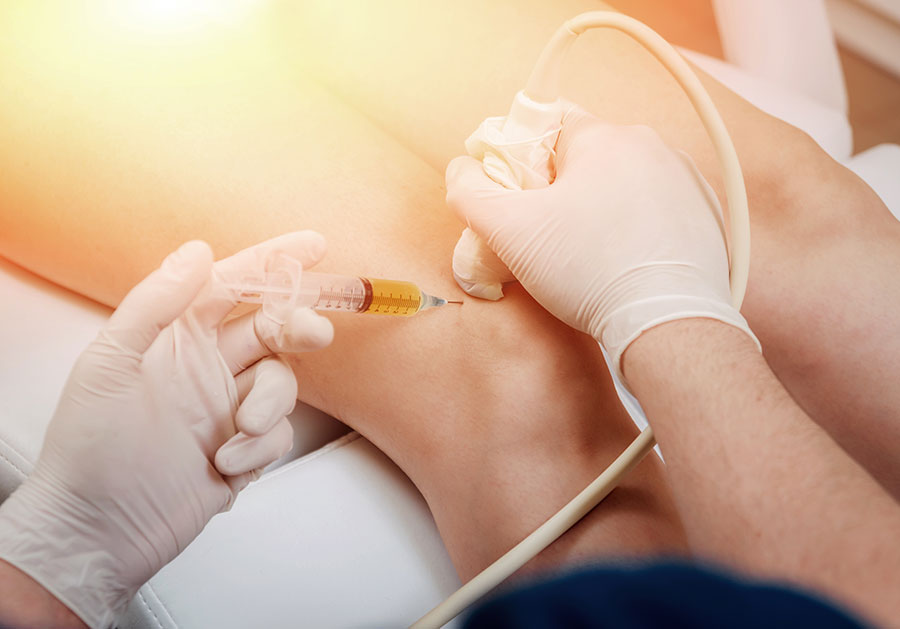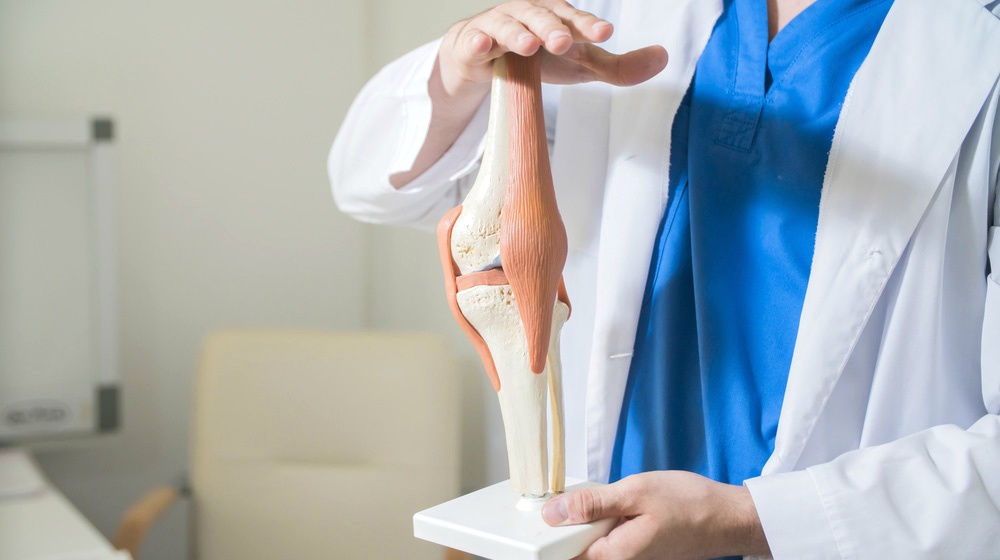Are you curious about stem cell treatment for knees as a more effective alternative for knee osteoarthritis? Then read further to learn what it suggests.
If you’re dealing with knee pain limiting your joint flexibility and your ability to enjoy the freedom of moving, then you obviously need urgent treatment. Osteoarthritis is one of the main causes of painful knee issues. The disorder occurs when the protective cartilage that is meant to cushion the ends of your bones wears down and loses its main function over time.
Yes, our bones and tissues wear down with age as well as any machine or mechanism wears down as time passes by. As we age, our joints become less flexible and we aren’t able to move easily, walk, run or jump without any stiffness in our legs and without any painful sensations. Osteoarthritis can damage any joint; however, it often hits your hands, hips, knees, and spine. This is why older people often walk slowly leaning on a cane and bending forward.
What are the treatment options for osteoarthritis?
Some of the key options currently offered for eliminating the pain in the knees are arthroscopic knee surgery and complete knee joint replacement. Any surgery, especially the total knee replacement is a continuous, painful, expensive, and very risky process that requires a very time-consuming rehab for up to 12 months.
The recovery includes about 2 days in the hospital; 3 months of being unable to walk on your own without the possibility to drive a car or bear weights; 6 months of painful sensations and a year before a full recovery. It is very likely that in 10-15 years you will need one more knee replacement again, and this will need an even longer recovery period than the initial knee replacement procedure.
Stem Cells for Knees and More Joint Issues
Thousands of patients with arthritis, painful knee issues, muscle and ligament tears, and more complicated and moderately severe cases have already tried stem cell treatment for knees or other joints. After that, they were able to start enjoying their favorite activities again with very little downtime after the procedure.
They have no mobility issues for climbing the stairs and walking a thousand steps a day. All of this has become possible for them thanks to stem cells. The aim of stem cell therapy is to support the natural healing process of a joint as well as reverse or at least slowdown knee degeneration and stop inflammation while bringing pain relief.
Let’s see the common purposes when stem cells for knees are mostly used:
- meniscus tears;
- arthritis or osteoarthritis (pain and inflammation of a joint);
- ligament injuries (anterior cruciate ligament (ACL), medial collateral ligament (MCL), posterior cruciate ligament (PCL) or lateral collateral ligament (LCL)) like sprain or tear;
- knee instability;
- Chondromalacia (also called patellofemoral syndrome) – a syndrome characterized by the pain at the front of a knee, around your kneecap (patella);
- Pes Anserine (knee tendon) Bursitis – an inflammation of a bursa located between the tibia (shinbone) and three tendons of the hamstring muscle inside of the knee;
- Baker’s Cyst – a fluid-filled cyst that causes a bulge and a feeling of tightness behind a knee. It occurs when joint-lubricating fluid fills a cushioning pouch (bursa) at the back of a knee;
- patellar tendonitis (jumper’s knee) – a condition described as an inflammation of a patellar tendon (a tendon that connects a kneecap to the shinbone (tibia).
- biceps femoris insertional tendinopathy – a condition that occurs as a result of irritation of the biceps femoris muscle (a tendon located in the lower part of the hamstring muscle directly attached to the back of the knee);
- hamstrings tendinopathy – a pathology of the high hamstring tendon where it is attached to the ischial tuberosity (sit bone of the buttock).

This is not the full list of disorders treated using stem cells, you can get in touch with our doctors and learn what other conditions are treated with their help.
Stem Cell Treatment for Knees: What’s the process of treatment?
Stem cells are cells located in almost every tissue and organ of our bodies. They are a kind of natural healers that help us to live. Unlike any other cells, stem cells have the ability to develop into other cells of organs and tissues including the brain, heart, cartilage, or more. This unique ability allows them to change the behavior of target cells and replace the ill cells with healthy ones.
All the tissues located in a healthy joint depend on the activity and number of stem cells in that particular joint. If there are fewer active stem cells available in a tissue, then it has a poor blood supply which is often the reason for the occurrence of disorders like osteoarthritis. An arthritic joint has an inflammatory environment because the cartilage is broken down and its cells are not replaced with healthy ones.
At our clinic, we utilize stem cells derived from a patient’s own tissue (bone marrow or fat) which guarantees the safety of a procedure since it doesn’t cause any unwanted rejection.
Stem cells are extracted from the tissue with minimal discomfort; they are then processed to separate unnecessary layers from useful ones and re-inject the obtained utile material into the knee together with concentrated plasma rich in platelets derived from a patient’s blood.
Growth factors in the platelet-rich plasma activate the stem cells and enable the cytokines to change the inflammatory environment within the knee into healing and repair. We use ultrasound technology which increases the accuracy of the stem cell injection and helps us to make a procedure very safe and risk-free. This is what’s called a process of stem cells knee repair.
We believe that this procedure enables the stem cells to start healing the broken cartilage by stimulating the formation of new healthy tissues while relieving the pain and improving the function of a joint.
Types of Stem Cells Used for Knee Treatment
Stem cells used for treating joints are often referred to as human mesenchymal stem cells. They are multipurpose cells found in the bone marrow, adipose tissue, synovial tissue, or other sources, and essential for making and repairing skeletal tissues including cartilage, bone, and fat found in the bone marrow.
Typically, doctors use several types of stem cells for curing the joints:
Bone Marrow-Derived: These cells are taken from your own bone marrows to be re-injected back into the problematic areas.
Adipose-Derived: These cells are aspirated from the area of your abdomen using a method of liposuction.
Umbilical cord and placenta-derived: Such cells are obtained from the afterbirth blood of the umbilical cord as well as material of placenta donated by new birth mothers with their signed consent.
These materials are screened in laboratories to check if they can be available for being used in patients. This donation harms neither a newborn baby nor a mother because all the process is completed based on the official agreement signed by the parties.
Such stem cells are checked for infections and tested using several diagnostic methods before they are taken by the clinics for providing cellular-based healing procedures.
It’s important to distinguish autologous cells which are the ones derived from a patient themselves and allogeneic ones which are taken from a third-party donor. The autologous cells are a safer option since it doesn’t bring the risk of an adverse reaction of the immunity.
Current Studies on Mesenchymal Stem Cells for Knees
Doctors at Georgia Regents University suggest that cellular therapies have the potential for regenerating the broken cartilage as well as fight cartilage degeneration, relieve pain, and improve the mobility of a patient.
Adipose-derived mesenchymal stem cells were used by the researchers for the study conducted in March 2020. They tested the autologous stromal vascular fraction against a placebo in the process of treating knee osteoarthritis.

The results of this study were published in The American Journal of Sports Medicine and stated that intra-articular injections would be potent enough to significantly decrease the damage brought by knee osteoarthritis as well as reduce the symptoms of this disease and decrease pain for at least 1 year.
A study held in December 2016, revealed the potential of umbilical cord stem cell injections made once a month for about 2 months to dramatically improve the function of a joint, so patients with knee osteoarthritis can enjoy a better quality of life.
The first obvious effects of such injections are observed in a month, and the treatment should be sustained for 6 months for reaching fixed results.
The Takeaway
The main goal of using stem cells is the possibility to avoid surgery (including the knee replacement) and get the best results without the necessity to undergo complicated treatment and long-term recovery. Injections with plasma rich with stem cells and growth factors derived from a patient’s own blood or any other source have become a promising treatment method for disorders like arthritis and osteoarthritis.
Such injections allow for significant improvement of the life quality of patients with painful knee disorders and related diseases that affect joints and limit mobility for a pain-free and flexible everyday life.
If you’ve got any additional concerns, questions, or suggestions, please feel free to contact our qualified medical experts. They are always ready to provide a qualified online consultation absolutely free of charge.


Leave a Reply